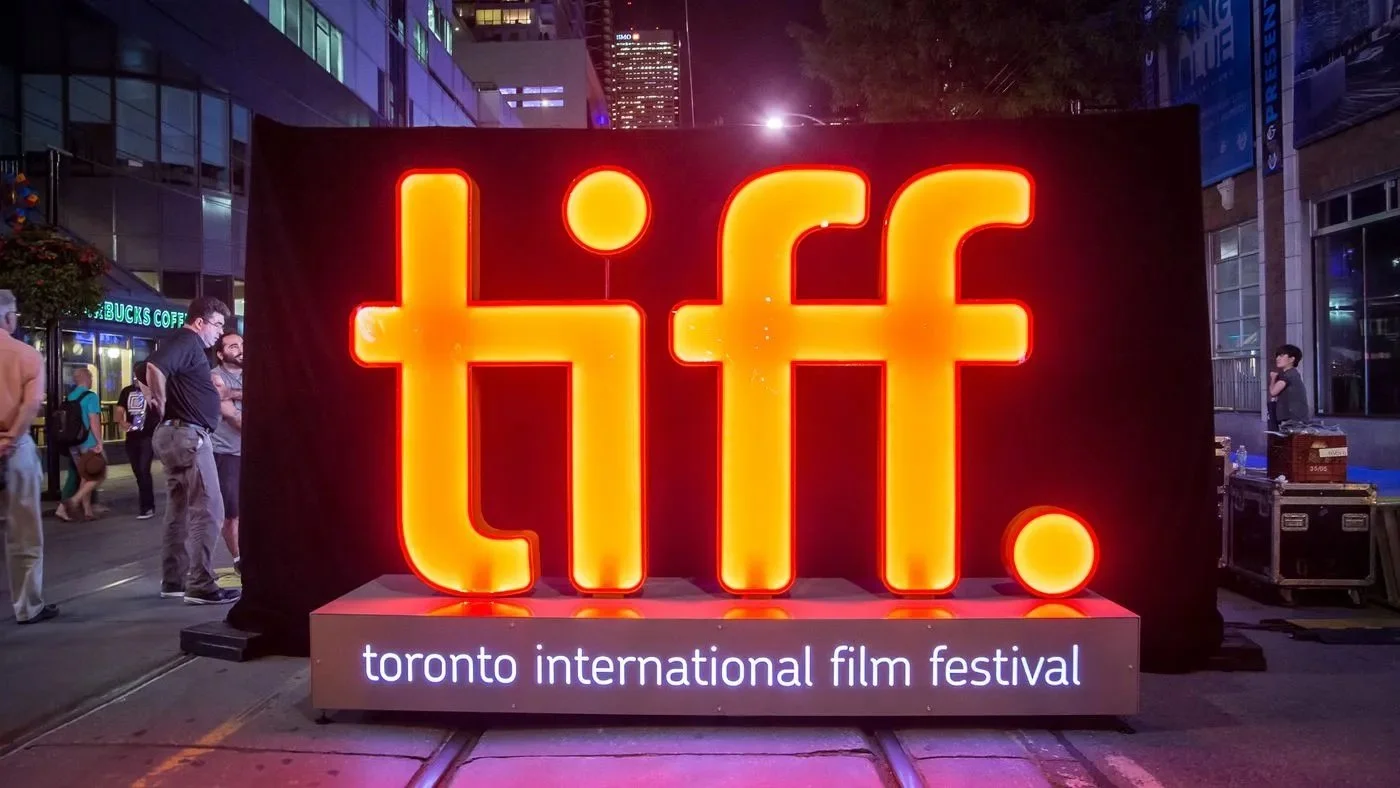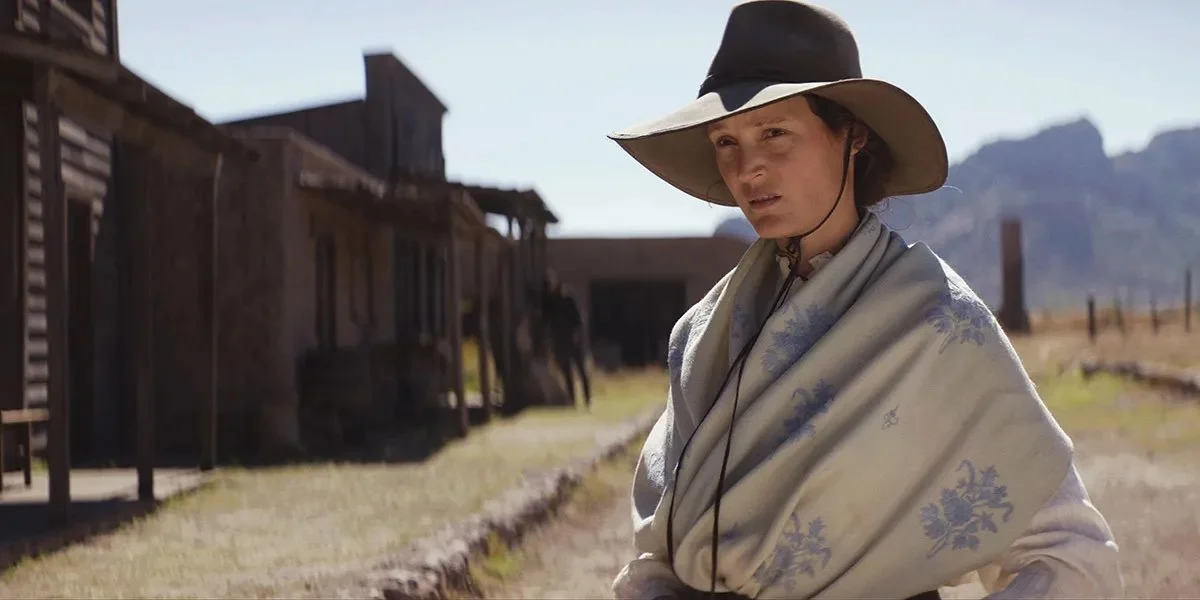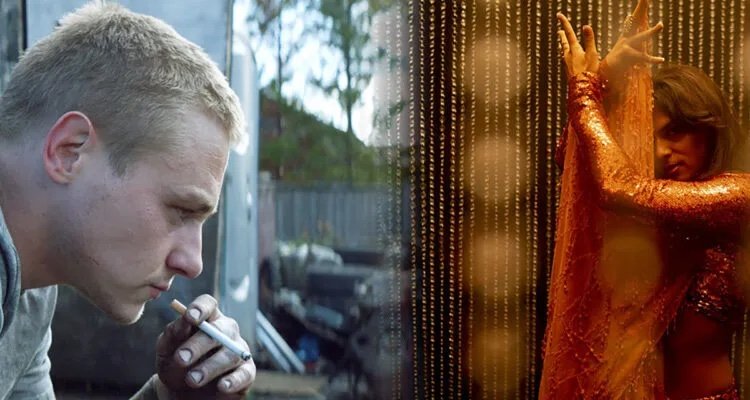TIFF 2023 Rundown: The films that I saw at the Toronto Film Festival (ranked)
Over the course of five days in Toronto, I dragged myself to 14 movies varying from international arthouse cinema to press screenings of upcoming blockbusters. It was pretty awesome. Here’s everything that I saw from the stuff that wasn’t my cup of tea to the films that will stick with me forever.
14. The Breaking Ice
I remember the first time I learned about metaphors in my 3rd grade English class which resulted in a poem about a bird flying away (a metaphor for growing up). Original, I know. While my poem was never considered in any prestigious art competitions, it is perhaps an aspirational comfort to know that films of similar metaphorical depth exist at Cannes (and also TIFF). The Breaking Ice, a Chinese film that premiered in Un Certain Regard at this year’s Cannes Film Festival tells the story of three emotionally/professionally/physically lost young people as they find themselves through their relationship with each other. The films boasts beautiful lead performances and stylistic influences of both Ryusuke Hamaguchi and Wong Kar-Wai which build the illusion that the film has something profound to say. In actuality, every heady metaphor — including the reoccurring ice imagery — teeter between cringe and confusing. Director Anthony Chen’s alluring visual composition is overshadowed by an emotionally empty script, resulting in a piece of work that would do better as a sizzle reel than a feature film.
13. Reptile
There’s a pretty awesome precedent of music video directors becoming filmmakers — David Fincher, Jonathan Glazer, and Antoine Fuqua to name a few. While I admire Grant Singer’s music video directing, I’m not so quick to add him to the list. Sure, he has some fun trick shots here and there but I could barely enjoy myself amongst an ensemble of 2D characters and an incredibly pushy score. Reptile feels like something churned out of a Netflix laboratory: a genre film with a nonsensical and lifeless script starring a veteran actor who was (most likely) paid an exorbitant amount of money to join the project. I don’t mean to bash on Benicio del Toro — he’s one of the better things about this film — but I struggle to find the appeal of this wannabe Se7en crime thriller.
12. The Dead Don’t Hurt
So much of me just wants to take this time to gush about Viggo Mortensen. And for valid reason. The man has exceeded his type-cast as the David Cronenberg and/or Lord of the Rings guy to writing, directing, acting, and scoring his own feature films. Round of applause. However, while I praise the attempt, I can’t do the same for it’s execution. The Dead Don’t Hurt follows every single traditional Western trope despite claiming it contains revolutionary feminist attitudes. The story revolves around a couple, Holger Olsen (Viggo Mortensen) and Vivienne Le Coudy (Vicky Krieps) who build a life in small-town Nevada in the midst of the American Civil War. The film so desperately wants to focus on and amplify Vivienne’s story (a female perspective that is often disregarded in the Western genre), but it quickly falls short of its noble goals for no good reason, reverting back to centering the story around a male protagonist.
11. Finestkind
In a Q&A after the premiere, writer-director Brian Helgeland (Legend) stated that, in many ways, Finestkind should have been his first feature film. This makes sense considering his semi-autobiographical fishermen crime thriller felt like it was taken straight out of the 90s. There was something so pure and enthralling in watching a bunch of rugged men haul tons of scallops from the bottom of the rough New England waters. However, as the film shifts towards crime thriller, it leaves the charm of the open water (along with the heart of the story) behind. I hope I don’t sound like a hypocrite now when I admit that I did cry at the end of the film. While the final act struggles to tie the story together, Tommy Lee Jones as Ray Eldridge, a hardened fisherman and father to Tom (Ben Foster), saves the film in its final minutes. It is a quiet performance, evidence of an actor that is years removed from his Men in Black or even No Country for Old Men days. Yet, his expressions alone carried the emotion necessary to explore the fickle dynamic of father-son relationships.
10. Unicorns
A quick skim of Unicorn’s summary can result in many perceived similarities with Saim Sadiq’s Joyland (2022) — a comparison that comes at a disservice considering Joyland’s high bar. Unicorns is a queer story centered around Luke (Ben Hardy), a caucasian mechanic from Essex and Aysha (Jason Patel), a Pakistani-Mancunian femme drag queen. The Britishness of this film plays an important role, examining the many pockets of English life from the Pakistani neighborhoods of Manchester to the negative stereotype of “Essex Boys” to London’s colorful underground “gaysian” community. These conflicting communities birth the often overdone queer romance tropes of closeted queer men and homophobic conservative households. Surprisingly, Krishna Floyd’s writing breathes life into the latter, giving Aysha’s family a generous amount of warmth and nuanced humanity in place of a cut and dry homophobia. That being said, Luke and Aysha’s courtship (which extends through the first two acts) is written and shot with the creativity and realism of a Hallmark movie. Not that there’s no room for films like this (the fact that a whole Hallmark channel exists is proof otherwise), but, considering the material, I expected much more.
9. Dumb Money
Is Craig Gillespie’s Dumb Money the new The Social Network (2010) or The Big Short (2015)? No. But, boy, did he try. The film retells the old, fabled story of the GameStop short squeeze in 2021. The story characterizes real players such as amateur investor and Redditor, Keith Gill/Roaring Kitty (Paul Dano), and founder of Melvin Capital Management, Gabe Plotkin (Seth Rogan), in addition to many fictional supporting characters. While the film carries a steady dose of entertainment, everything from the story’s comical gags to its heavier dramatic peaks are played as parody. It was as if you could feel the smirk on Gillespie’s face behind every shot. This is despite clear attempts to strike the same melodramatic tone as the famed Facebook movie (it’s no coincidence that Will Bates’ echoey piano score mimics the work of Trent Reznor and Atticus Ross). However, not even having the Winklevoss twins as executive producers can put your film up against The Social Network.
8. Dear Jassi
Tarsem Singh, the filmmaker behind the Snow White fantasy Mirror Mirror (2012) and sci-fi blockbuster Self/less (2015), shifts gears with Dear Jassi, a true and immensely tragic love story set in Punjab, India. He creates an intimate world almost indistinguishable from his previous big budget projects. The film centers around Jassi (Pavia Sidhu), a first generation Canadian, who meets a local boy named Mithu (Yugam Sood) when visiting her family in Punjab. It’s love at first sight. Declarations of admiration out of windows, clandestine meetings at night, classic Romeo and Juliet… almost. Their relationship is rooted in strict cultural traditions of honor and social class leaving little room for love. Sidhu and Sood bring incredible charm and refreshing innocence to their young love. While the film loses momentum at times, the couple remains to be the force that pushes it forward. Knowing the true story behind the film fuels the horror of the final act of which Tarsem directs like a painting — static and unsparing. A beautiful romance colored with Punjabi parable and an ending that breaks your heart.
7. Fair Play
I forgive a lot of the unsuccessful parts of this film because of how entertained I was. Two attractive leads in a toxic workplace romance? Sign me up. It was evident that Phoebe Dynevor (Bridgerton) and Alden Ehrenreich (Solo: A Star Wars Story) were waiting for juicy roles like these and, consequently, dialed their performances up to 1000% (and then some). While thrilling and dramatic and sexy and even humorous, the overall story is structurally mismatched. The world of Emily and Luke’s Wall Street hedge fund felt unusually small which resulted in a workplace that leaned more into pastiche than convincing reality. Furthermore, there was not nearly enough relationship building or development of their individual characters to justify the frenzied, Hail Mary final act. As such, the story feels better suited to a limited series than a feature film.
6. Shoshana
We throw around the “duality of man” on a whim, but considering the guy behind this film — a period drama about 1930s Mandatory Palestine — also made 24 Hour Party People (2002), I’d be hard pressed to find a filmmaker more versatile than Michael Winterbottom. If there’s one thing that connects the majority of his work, it’s Winterbottom’s continued fascination with dramatic re-creation. His films, including Shoshana, are neither fact nor fiction. They are true stories filled with intensely researched storylines and colored with fictional extrapolations. The ethical debates behind this kind of storytelling are justified — In This World (2002) still fights against criticisms of exploitation and revisionist history — but regardless of your stance, Shoshana is a remarkable political thriller about one of the most difficult issues in modern politics. As a British filmmaker, Winterbottom’s perspective on British Mandatory Palestine is one of immense humanity and nuance. While the story centers around Shoshana, the daughter of a Zionist Labour movement founder, Winterbottom refrains from projecting blind and absolute support for his protagonist. Instead, people’s actions speak for themselves as we see how even the most righteous can turn to violent extremism. Winterbottom displays the varying perspectives of many Jewish and British people (Arabs, noticeably, to a lesser extent ) in the area while delivering a perspective of his own: achieving middle ground is impossible without eliminating political violence.
5. The Holdovers
Let me state for the record that I am no stuck up arthouse cinephile. Sometimes, the formulaic works. Alexander Payne draws from 80s coming-of-age dramas in more ways than just dated costumes and aesthetic film grain added in post. The Holdovers takes place at an all-boys New England boarding school where Paul Hunham (Paul Giamatti), a haughty and solitary history teacher, is forced to stay on campus during the holidays to watch over Angus (Dominic Sessa), a delinquent but remarkably bright student. Da’Vine Joy Randolph as Mary, the school’s cook, rounds out the trio of adversaries turned unlikely friends. Nothing about the film is revolutionary, Payne was openly influenced by Hal Ashby and no film about boarding school can avoid the Dead Poets Society comparison. However, the strength of Giamatti, Sessa, and Randolph’s performances made The Holdovers incredibly entertaining even if incredibly predictable.
4. Anatomy of a Fall
Unlike last year’s Triangle of Sadness, Anatomy of a Fall felt like an uncomplicated yet deserving Palme d’Or winner. A valid showcase of well-rounded filmmaking with a highly executed screenplay and ensemble performances (including the pet dog). Every question, every answer, every sigh, tear, laugh, is calculated. A title with such medical overtones is purposeful. Triet is a surgeon of storytelling, administering exact doses of information which leaves very little to parse through or read into. I felt no choice but to praise the level of detail and structure given to every atom of the project. However, what made an impressive first viewing could be exactly what hinders the film’s staying power. On second viewing, without the anticipation of the courtroom verdict, the film’s extended runtime and formulaic structure are promptly revealed which could dull the film’s overall shine.
3. Dream Scenario
If I’m laying all my cards on the table, I was always more of an Indiana Jones than a National Treasure girl. Nick Cage has never drawn me to the movies. That being said, I have nothing against becoming a bandwagon fan after this. Despite originally seeking out Dream Scenario because of Ari Aster’s executive producer role, Cage’s performance was the true standout. He stars as Paul Matthews, a college professor with the sole trait of being incredibly average. That is, until people all over the world start unexplainably seeing him in their dreams. Cage imbues Paul with immense humanity and relatability as he navigates overnight stardom and internet cancel culture. I struggle to see the character working without the veteran actor, as Cage and Paul are twisted into a singular examination of the man’s celebrity status. Noticeably, as the film references everything from Jordan Peterson to the TikTok Hype House, it dips into zeitgesity buzz word territory. However, Dream Scenario remains an earnest and erudite attempt at capturing the horror and comedy that is birthed from our bizarre 2023 culture.
2. How to Have Sex
There’s a reason why horror movies that begin with “based on a true story” only worsen my fear. Films that not only tell a story but convince you that it actually happened inevitably create stakes and a level of personal investment. Put simply, if something happened in real life, there’s a possibility in which it can happen to me. While How to Have Sex (this year’s Un Certain Regard Prize winner) isn’t a horror movie or based on a true story (explicitly, at least), it achieves the extreme verisimilitude of three British girls on a post-high school holiday. What starts as a fun teen Spring Breakers (2012) comedy sours into an uncomfortably raw coming-of-age film. Cinematographer turned writer-director Molly Manning Walker builds a story that could be documentary if not for the beautifully stylized, strobe-filled party montages. Mia McKenna-Bruce as the central character, Tara, is one of the most ground-breaking performances of the year as she embodies every layer of teenage girls — from snarky to naïve to intensely loving. How to Have Sex is less of a manual than a hilarious, heartfelt, and unsparingly disturbing exposé of all the beauty (and ugliness) of womanhood.
1. The Beast
Admittedly, my praise for many of the previously mentioned films gets no where close to my admiration for Bertrand Bonello’s The Beast. I can’t find a worthy comparison of a film in the last two decades that breaks both boundaries of narrative and medium. What opened like satirical Ruben Östlund film quickly transforms into an extraordinary three-part melodrama set in 1910 Paris, 2014 Los Angeles, and (futuristic) 2044 Paris. Gabrielle (Léa Seydoux) and Louis (George MacKay) find each other across each timeline only to be confronted by an inevitable catastrophe. Tackling the concept of doom on-screen is a terribly lofty goal. The word alone carries an air of cheap hyperbole that begs to be taken seriously. And yet, Bonello succeeds. He oscillates between elegant cocktail parties (with a bit of Kubrekian flare) to full-on Argento-style home invasion thriller all the while playing with design, color, and the camera itself. Not unlike those of my beloved French New Wave, Bonello pushes the audience to be perpetually aware of their spectatorship. He manipulates technology while commenting on how technology can manipulate us. The result is a simple-plotted drama that is compounded into a highly ambitious epic that balances romance and tragedy, tradition and progression, and fate. A common criticism of The Beast has been the film’s length. Bonello does have a habit of living in spaces for a bit too long. However, he is acutely aware of his languid pacing (which, let’s be honest, is nowhere near as slow as a many lauded filmmakers) and inspires his audience to embrace the environment. The Beast is on the precipice of a new era of filmmaking — one that honors previous auteur storytelling and the groundbreaking technological visuals in our post-industrial era. While I’ve always loved Bonello since Saint Laurent (2014), The Beast has solidified him as a true inspiration.


